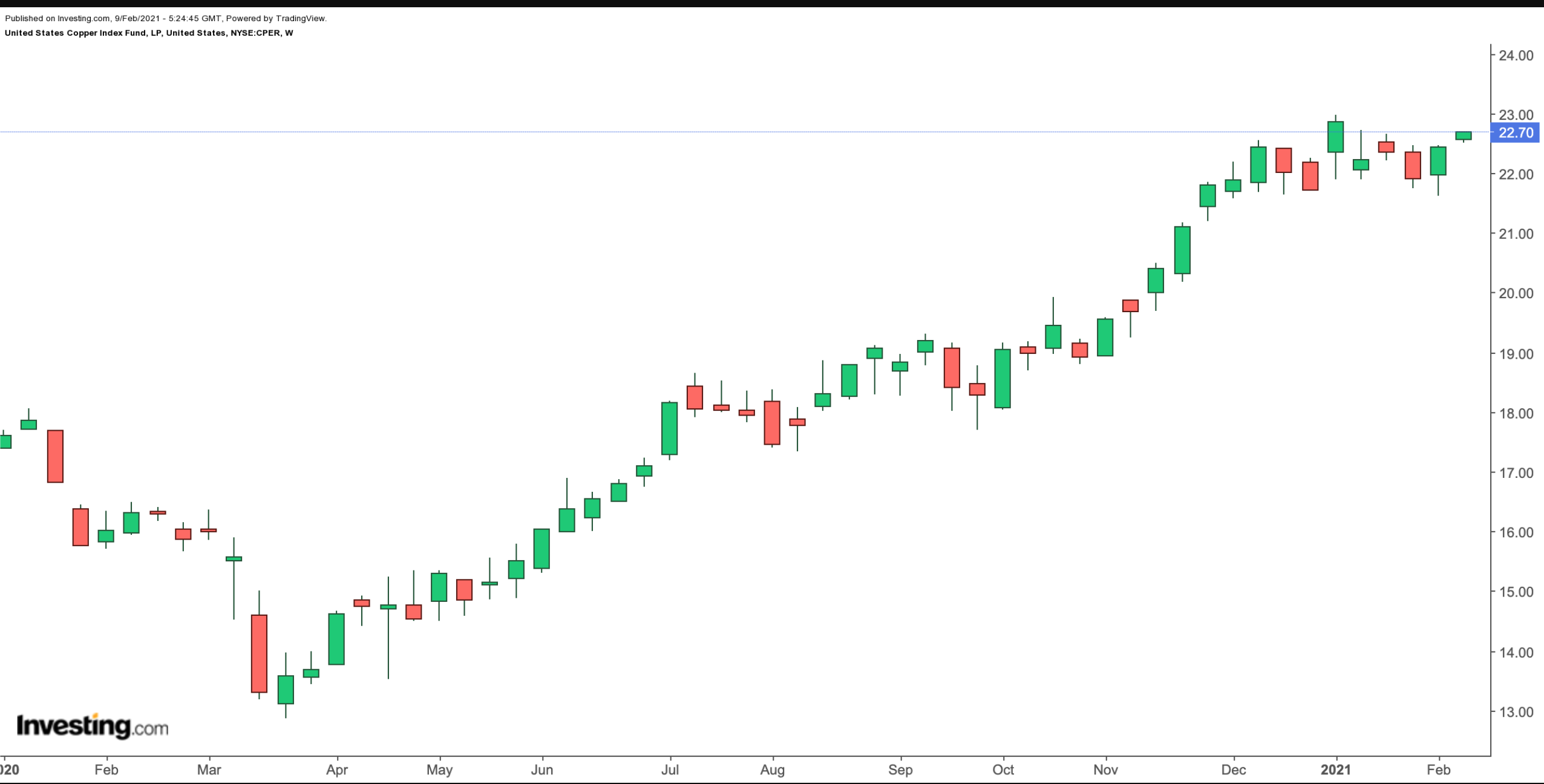In March 2020, the cash price of copper hit a multi-year low of $4,617 per tonne on the LME. Then, recently, along with many asset classes, copper surged to reach the current multi-year highs of around $7,950 (we should note that the futures prices at the CME are quoted per pound).
Metrics from Statista show that global copper consumption is currently at 25 million metric tonnes and steadily increasing.
According to the International Copper Study Group (ICSG):
"Sustained growth in copper demand is expected to continue as copper is essential to economic activity and even more so to the modern technological society. Infrastructure development in major countries such as China and India and the global trend towards cleaner energy will continue to support copper demand."
2020 became the year when consumers decided to make their lives greener. As a result, investors paid attention to the electric vehicle (EV) and alternative energy trends.
Global research firm Wood Mackenzie highlights:
"Copper is a cornerstone of the EV revolution. At the heart of the electric vehicle, copper is used throughout because of its high electrical conductivity, durability and malleability. And even more is used in charging stations and in supporting electrical grid infrastructure."
On a final note:
"While conventional cars have 18-49 pounds of copper, hybrid electric vehicles (HEV) contain approximately 85 pounds, plug-in hybrid electric vehicles (PHEV) use 132 pounds, battery electric vehicles (BEVs) contain 183 pounds... most of which is used in the battery."
The European Union (EU) is progressing with the European Green Deal, while many of U.S. President Joseph Biden's policies are likely to be aligned with his climate strategy. China pledged to reach carbon neutrality before 2060. Other individual countries are also taking steps for a greener future.
As a result of increased reliance on copper, many analysts still see a potential long-term increase in price. We recently covered the FTSE 100-listed miner Antofagasta (LON:ANTO) (OTC:ANFGF) as well as some of the fundamentals of this base metal. Today, we extend the discussion to two exchange-traded funds (ETFs) that may appeal to readers interested in this shiny commodity.
1. Global X Copper Miners ETF
Current Price: $33.04
52-Week Range: $9.62 - $34.46
Dividend Yield: 1.23%
Expense Ratio: 0.65%
The Global X Copper Miners ETF (NYSE:COPX) provides exposure to a broad range of copper mining companies worldwide. Canadian miners head the list with 32.5%, followed by the UK (11.4%), the U.S. (9.8%), China (9.1%), India (6.2%) and Australia (5.8%).

COPX, which has 30 holdings, tracks the Solactive Global Copper Miners Total Return Index. The fund started trading in April 2010 and has close to $354 million in net assets.
The top 10 stocks comprise nearly 53% of the ETF. India-based natural resources company Vedanta (NYSE:VEDL), Canadian diversified mining company First Quantum Minerals (OTC:FQVLF), Arizona-headquartered miner Freeport-McMoran (NYSE:FCX), Anglo-Swiss mining and commodity trading group Glencore (LON:GLEN) (OTC:GLNCY) and China-based Zijin Mining (OTC:ZIJMF) lead the roster.
Over the past 12 month months, COPX returned around 73%. The fund hit a multi-year high of $34.46 on Jan. 8, 2021, and now stands at around $31.96. Those readers who want to invest in copper miners might regard a decline toward $30 or even below as a good entry point.
2. United States Copper Index Fund
Current price: $22.70
52-week range: $12.87 - $22.97
Expense ratio: 0.80%
The United States Copper Index Fund (NYSE:CPER) is an ETP, tracking a portfolio of COMEX copper futures. There may also be forwards and swap contracts in the fund. In other words, the returns depend on the price of copper, which is influenced by a supply and demand factors.

CPER started trading in November 2011 and its net assets are over $106 million. For the current month of February, the Benchmark Component Futures Contracts are: Copper Mar 21, Copper May 21 and Copper Jul 21.
The fund returned more than 37% in the past year and is also up 3.3% in 2021. Those investors who would like to have commodity exposure without using a commodity futures account might want to keep the fund on their radar.
Which stock should you buy in your very next trade?
With valuations skyrocketing in 2024, many investors are uneasy putting more money into stocks. Unsure where to invest next? Get access to our proven portfolios and discover high-potential opportunities.
In 2024 alone, ProPicks AI identified 2 stocks that surged over 150%, 4 additional stocks that leaped over 30%, and 3 more that climbed over 25%. That's an impressive track record.
With portfolios tailored for Dow stocks, S&P stocks, Tech stocks, and Mid Cap stocks, you can explore various wealth-building strategies.
